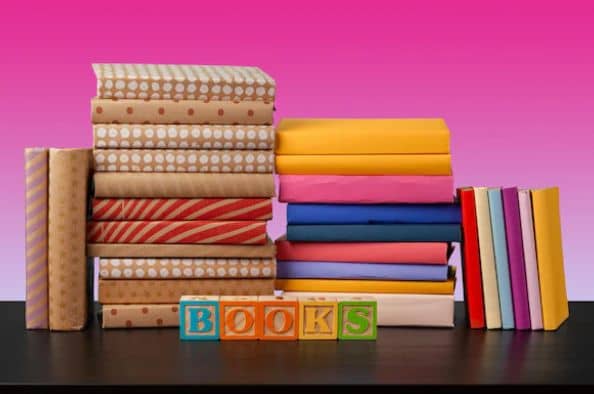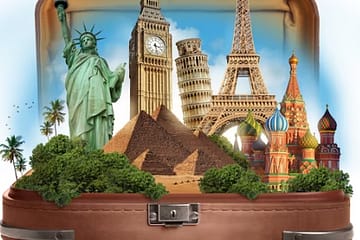
“The God of Small Things” by Arundhati Roy
General knowledge
Characters
- Who is Pappachi,?
Ans. Pappachi is Revathy Ipe, the father of Ammu and Chacko. - What is, the full name, of Baby Kochamma,?
Ans. Navomi Ipe.
3 Who are, the twin characters, in the novel?
Ans. Estha (Esthappen) and Rahel. - Who is ,Ammu?
Ans. The mother, of Estha a,nd Rahel. - Who is Chacko?
Ans. Ammu’s brother ,and Estha and Rahel’s uncle. - Who is ,Sophie Mol?
Ans. Chacko’s daughter from his marriage to Margaret Kochamma. - Who is, Velutha?
Ans. A Dalit carpenter and an employee at the Ipe family pickle factory. - Who is, Margaret Kochamma?
Ans. Chacko’s ex-wife and Sophie Mol’s mother. - Who is, Mammachi?
Ans. The mother of Ammu and Chacko, and wife of Pappachi. - Who is, Kochu Maria?
Ans. The family’s maid.
Plot and Themes - What is, the chief theme of (The God of Small Things),?
Ans. The chief theme, of the Novel, is historical, and social factors, on personal lives, focusing on forbidden love, family dynamics, and social standards. - Where is, the novel fixed?
Ans. In an Indian village “ Ayemenem in Kerala” - How does, the novel originate?
Ans. On ariving of Rahel from abroad to Ayemenem. - What heart-breaking incident marks the climax of the story?
Ans. Accidental death of Sophie Mol. - What kind of insect did Pappachi decern/discover,?
Ans. Moth. - Why is, Pappachi’s moth momentous?
Ans. Pappachi’s moth embodies his unrecognized attainments, and his annoyance, and frustration which impacts his family. - How is, the story described?
Ans. Through a non-linear narrative, shifting between dissimilar timelines and viewpoints. - What prohibited relationship is central to the novel?
Ans. The love affair between Ammu and Velutha. - What communal issue, does Velutha’s character highlight?
Ans. Rigid caste system in India. - How does, Ammu die?
Ans. Poverty/ isolation.
The Novel The God of Small Things written by Arundhati Roy.This Novel focuses on the theme of forbidden love.This novel explores love and how love can’t be ignored when confronted with social boundaries.
- What does, the river, in the novel (The God of Small Things) indicate,?
Ans. It signifies both, life and death, being a place of infantile innocence and heartbreak. - Whatdoes,Pappachi’s moth ,represent?
Ans. Pappachi’s misunderstood achievement, and the enduring bitterness ,and misuse he imposed, on his family. - What motif, is constantly used to depict childhood?
Ans. The motif of banned joy, and innocence. - What does, the history house signify?
Ans. The decaying colonial past, and the burden of family history. - What is, the importance of the pickle factory ,in the story?
Ans. It signifies the family’s business, and their linking to traditional Indian culture. - Who is, the author of (The God of Small Things),?
Ans. Famous & Popular Arundhati Roy. - When was, (The God of Small Things) published,?
Ans. 1997. - What literary award, did the novel win,?
Ans. Booker Prize in 1997. - What is, the genre of (The God of Small Things),?
Ans. Literary fiction. - How is, the structure, of the novel designated,?
Ans. Non-linear, and fragmented. - In what period, is the novel mainly fixed?
Ans. The 1960s and 1990s. - Which Indian state, is the novel set in,?
Ans. Kerala. - What historic incident, is referenced in relation to Chacko’s schooling?
Ans. Chacko studied at Oxford, during the time of the British colonial, impact in India. - What does, the caste system, signify in the novel?
Ans. The engrained social hierarchy, and discernment in Indian society. - How does, the novel address, post-colonialism,?
Ans. Through viewing, the lingering effects, of British colonial rule, on Indian society, and personal identities. - Which character says, “Anything can occur to anybody? It’s best to be ready”?
Ans. Ammu. - Who said, “They all broke the rules. They all crossed, into prohibited region. They all tampered, with the laws, that lay down who should be loved, and how”?
Ans. This is, a narrative voice reflecting, on the actions of the characters. - What is, the well-known opening line of the novel?
Ans. (May in Ayemenem is a hot, brooding month)… - How does, the title (The God of Small Things), relate to the novel?
Ans. It denotes to the small, often overlooked details, and actions, that shape the lives of the characters. - What occurs, to Estha after Sophie Mol’s death,?
Ans. Estha, is sent to live, with his father, in Calcutta.
The Novel The God of Small Things written by Arundhati Roy.This Novel focuses on the theme of forbidden love.This novel explores love and how love can’t be ignored when confronted with social boundaries. - Who signifies, the (Big God), and the (Small God) in the novel,?
Ans. The (Big God) signifies social standards, and laws, while the (Small God), signifies personal longings, and outlawed love. - What is, the importance, of Rahel’s return to Ayemenem,?
Ans. It signifies, her effort to reunite with her past, and the loss of her infantile. - What does, the (Orange Drink Lemon Drink Man), episode signify in Estha’s life,?
Ans. It signifies his trauma, and the loss of blamelessness. - What role ,does religion , perform in the novel,?
Ans. Religion is represented as both; a source of comfort, and a means of enforcing social limits. - Define Pappachi’s concerns with Mammachi.
Ans. Pappachi is rude to Mammachi, exemplifying patriarchal subjugation. - How does, Chacko’s political beliefs impact his actions,?
Ans. Chacko, is a Marxist, who identifies with the working class, but is also hypocritical in his personal life. - What internal conflict, does Baby Kochamma expression,?
Ans. Baby Kochamma fights with unanswered love and bitterness, leading to manipulative behavior. - What does ,Sophie Mol’s ,visit to Ayemenem indicate,?
Ans. It represents, the intrusion of Western culture, and the disruption of the family’s symmetry.
All questions/answers are as per Novel The God of small things, Just for general knowledge
- How does ,Rahel cope ,with her past shock?
Ans. Rahel copes ,through expressive detachment, and ultimately returns to Ayemenem seeking closure. - How does, the novel critique social hierarchy,?
Ans. By portraying the tragic impacts of caste discernment, and rigid social rules. - In what way, is nature a recurring motif, in the novel,?
Ans. Nature is portrayed both; as a nurturing force ;and a witness to the characters’ lives ;and tragedies. - What is, the importance of (the loss of Sophie Mol), in the novel,?
Ans. It helps as a catalyst for the disentanglement of family secrets and the downfall of the Ipe family. - How does, the novel portray childhood,?
Ans. As a time of innocence marred, by traumatic experiences, and societal constraints. - What does, the motif of (the moth) reveal about Pappachi’s character,?
Ans. It reveals his failure ,and bitterness, influencing his abusive behaviour towards his family. - What role, does imagery play, in the novel,?
Ans. Symbols like the moth, the river, and the pickle factory enhance the thematic depth, and character development. - How does, Ammu’s relationship, with her children evolve throughout the novel,?
Ans. Ammu’s relationship, with Estha and Rahel is characterized, by deep love but stressed, by societal pressures, and personal struggles. - What is, the role of Comrade Pillai, in the story,?
Ans. Comrade Pillai, is a local politician, who uses Velutha, for his own gain, and later abandons him, when it becomes politically appropriate. - How does, Velutha’s relationship, with Ammu defy societal norms,?
Ans. Their relationship crosses the inflexible caste lines, prominence the transgressive nature of their love. - What does ,Mammachi’s blind eye signify,?
Ans. It represents her blindness ,to the abuses within her family, and her selective perception of reality. - What is, the impact, of Sophie Mol’s death, on Baby Kochamma,?
Ans. It deepens, her bitterness, and resentment, leading her to manipulate actions to maintain her consequence over the family.
The Novel The God of Small Things written by Arundhati Roy.This Novel focuses on the theme of forbidden love.This novel explores love and how love can’t be ignored when confronted with social boundaries. - How does, the novel explore, the theme ,of banned affection,?
Ans. Through the relationships between Ammu and Velutha, and the implicit bond between the twins, challenging social norms. - What does, the motif, of water represent ,in the novel,?
Ans. Water represents fluidity, change, and the inescapable nature of destiny. - How is, the concept of, (small things), important in the novel,?
Ans. It underscores, the importance of minor details, and personal experiences, in shaping the characters’ lives.
Ans. By showcasing, the tyranny confronted, by feminine characters like Ammu, Mammachi, and Baby Kochamma. - How does, Roy portray ,the connexion of personal, and political fights,?
Ans. Through characters ,like Chacko and Velutha, importance the influence of political philosophies on individual lives. - How does, the writer ,use irony, in the novel,?
Ans. Irony, is used ,to highlight the inconsistencies, between social prospects ,and the characters’ realities. - What is, the effect ,of the disjointed narrative construction,?
Ans. It mirrors the characters’ fractured lives and memories, emphasizing the complexity of their experiences. - How does, Roy use, imagery/metaphors to increase the description?
Ans. Vibrant imagery brings, the setting and feelings to life, creating a sensory-rich practise for the reader. - What is, the importance, of the continual references, to colors, in the novel,?
Ans. Colours, are used emblematically, to reflect sentiments, cultural contexts, and the characters’ internal worlds. - How does, the usage, of Malayalam words, add profundity, to the novel,?
Ans. It roots, the story, in its cultural setting, adding genuineness, and fertility to the narrative. - What role, does the caste system, play in the novel,?
Ans. It is a chief theme, dictating social communications and contributing to the tragic consequences of the story. - How is, the effect, of Western culture, portrayed,?
Ans. Through typescripts like Chacko and Sophie Mol, viewing together the allure and the disturbance caused by Western ideals. - How does, the novel statement, the matter, of family honour,?
Ans. By demonstrating, how social prospects of honour, and status constrain, and damage the characters. - What historical actions are slightly referenced in the novel?
Ans. The rise, of communalism, in Kerala, and the broader context of India’s socio-political ups and downs. - Who says, “Ammu had an intricate road map of dreams”?
Ans. The narrator, dazzling on Ammu’s ambitions and the limitations imposed on her. - What is the importance of the quote, “And the air was full of Thoughts and Stuffs to Say”?
Ans. It captures, the tense, and unsaid sentiments, between characters, emphasizing the theme of statement/communication, and stillness. - How does, the phrase, (the god of small things), seem, in the description,?
Ans. It is recycled, to describe Velutha, signifying his focus, on unimportant/small, everyday particulars, and his marginal status. - What is, the importance of the quotation, “Anything can happen to anyone”?
Ans. It highlights the unpredictability of life, and the vulnerability of the characters. - How does, the quotation, “They all broke the rules” encapsulate the novel’s themes,?
Ans. It highlights, the characters’ disobediences in contradiction of social norms, and the consequences they face.
The Novel The God of Small Things written by Arundhati Roy.This Novel focuses on the theme of forbidden love.This novel explores love and how love can’t be ignored when confronted with social boundaries. - What does, the pickle factory signify,?
Ans. The connection of tradition, and modification, and the economic fights of the family. - How is, the theme, of imaginings, used in the novel,?
Ans. Dreams echo, the characters’ wishes, and the harsh genuineness, that frequently smashes them. - What does, the recurrent image ,of the river signify,?
Ans. It signifies, the flow of time, memory, and the predictability of fate. - What does, the theme, of outlawed affection exemplify,?
Ans. The struggle between personal wishes, and social limitations. - What reminders, Rahel’s homecoming, to Ayemenem,?
Ans. Her stoppage, from life abroad, and the unsettled past. - How does, the communal react, to Ammu and Velutha’s affiliation,?
A: With barbarity, and ferocity, reflecting deep-seated caste prejudgments. - What role does, the old boat, play in the story,?
Ans. It obliges, as a figure of outflow, and the disastrous end of Sophie Mol. - How does, the novel end,?
Ans. With the tragic recollection of Ammu and Velutha’s last moments together. - What is, the importance, of the Kathakali performance, in the novel,?
Ans. It replicates, the cultural legacy of Kerala, and the characters’ expressive situations. - How does, the novel portray, the complications of mother-daughter affairs,?
Ans. Through the stressed yet affectionate bonds, between Ammu, and her children, and between Mammachi, and her descendants. - What does, Estha’s silence signify,?
Ans. His trauma, and the burden of unexpressed facts. - How is, the theme of commemoration, discovered in the novel,?
Ans. Through disjointed flashbacks, that piece together the characters’ past, and its influence on the current. - What does, the old house in Ayemenem signify,?
Ans. The decay of tradition and the weight of family history. - How does, the novel statement, the theme tune of uniqueness,?
Ans. By viewing, the characters’ fights, with social tags, and personal self-understanding. - What enthused Arundhati Roy to write (The God of Small Things),?
Ans. Roy drew, from her own involvements growing up, in Kerala, and the socio-political environment she pragmatic. - How long, did it take Roy, to write the novel,?
Ans. Four years. - What impression, did winning the Booker Prize, have on the novel,?
Ans. It brought international approval, and knowingly enlarged its readership. - How has, the novel been, acknowledged disapprovingly,?
Ans. It has been praised, for its lyrical prose, complex narrative construction, and heart-breaking theme tune.
The Novel The God of Small Things written by Arundhati Roy.This Novel focuses on the theme of forbidden love.This novel explores love and how love can’t be ignored when confronted with social boundaries.



0 Comments